Filter by Type
Filter by Category
Filter by Size
Filter by Year
Artists
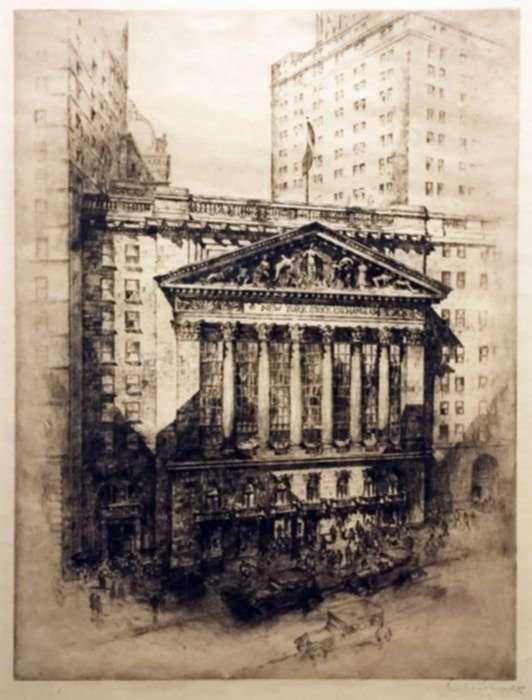
Anton Schutz
German (1894-1977)
Artist, later art publisher and founder of New York Graphic Society. Grew up outside of Trier, Germany, and was recognized early on as a talented young artist. In 1914, Schutz was drafted into the German army and served with distinction in Flanders, East Galicia, reaching the rank of corporal. His experiences in the First World War had a profound effect on him that increased his pacifist leanings. Upon returning from war, he resumed his art and moved to Munich. His early artistic career was known for oil paintings of traditional German landscapes which focused on historic architecture of the German speaking world. In Munich, he simultaneously attended both the Art Academy and the Technical University for architectural studies. Under Hermann Groeber, he learned the skill of copperplate etching and began etching hundreds of cityscapes across Germany. His etchings sold well in Germany from 1918-1922, particularly in the galleries of Munich. In Munich, Schutz witnessed first hand the economic crisis of 1923 and the early rise of the Nazi party under Adolph Hitler. His apartment window faced out directly to the Feldherrnhalle where Hitler tried to violently overthrow the Weimar Republic in November 1923. Although socially and economically successful in Munich, he emigrated in February 1924 to New York City after destroying all of his copperplates used to print his German etchings. In New York, he immediately became a successful etcher, known for his technical skills and portrayals of American city life on the eastern seaboard. His depictions of the modern progressive city were so impressive, that the newly formed USSR invited him to Moscow to produce similar etchings. After returning from Moscow in 1928, he also toured Europe as an “American” artist. His primary subject was the architecture and city life of New York with emphasis on Manhattan and Brooklyn. His portrayals of New York City are renowned for his sense of progress and his ability to capture of the grandeur of the modern city. After only being in the USA for a short time, Schutz was able to capture the American spirit of New York City in the 1920s so remarkably that his New York etchings are still highly sought after today. Their style and the spirit of the time that they invoke represent how the immigrant sees the progress of the modern American metropolis. Despite his successes in the art world in the USA, the coming war and the waning interest in black and white etchings drove him to shun art production in 1939. As founder of the New York Graphic Society, he turned his attention to high quality art reproduction. The NYGS produced many books highlighting European masters in full color from 1925-1966. The NYGS was contracted in 1949 by the United Nations through UNESCO to publish the World Art Series. Schutz traveled the world from 1949-1961 documenting world art for the United Nations. Schutz died on October 6, 1977 in New York. His papers and art are housed in the Smithsonian, and examples of his art are housed in the Uffizi, National Gallery in Paris, are collected by private collectors and sold in many galleries. His representation of the American Spirit in the 1920s and 1930s is still recognized today as being wholly unique and his work documenting world art is valued and preserved through the United Nations World Art Series.
http://www.washjeff.edu/german/antonschutz/about_anton_schutz.htm
Works by Georges Rouault
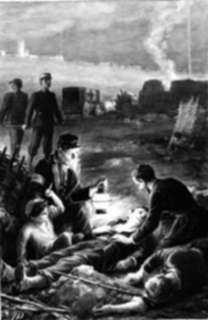
Frederick Dielman
German-American (1847-1935)
Frederick Dielman was born in Hanover, Germany, December 25, 1847. He came to United States as a child, graduated from Calvert College, New Windsor, Maryland (later New Windsor College), and studied art under Diez at Royal Academy, Munich. Betweeen 1872-76, he worked as a topographer and draftsman in United States engineering department. Dielman opened a studio in New York in 1876, and was a National Academician since 1883. He served as president of the National Academy of Design between 1889-1909, and was a member of the Art Commission of New York between 1901-03. As an illustrator and figure painter, he was the designer of the mosaic panels "Law" and "History" in The Library of Congress, and of the large mosaic, "Thrift,"at Albany Savings Bank, as well as the decorations in the new building of the Washington "Evening Star." Dielman was a Professor of drawing at the College of the City of New York and a member of the National Institute of Arts and Letters.
Works by Frederick Dielman
Works by Edward Vance Warren
Works by Jacobus van Huysum
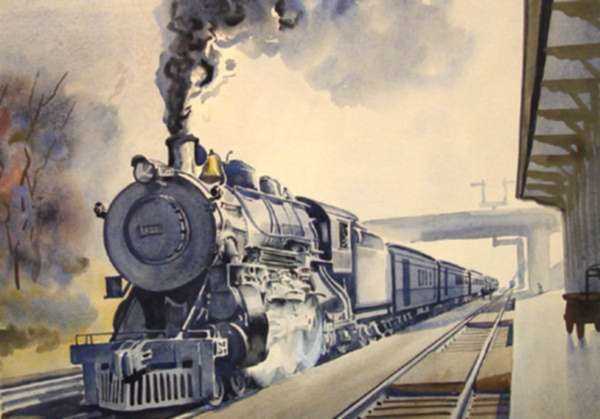
Francis Wenderoth Saunders
American (1901-1992)
Saunders began his art training at what is now called the Massachusetts School of Art. He received an A.B. in 1924, an A.M. in 1926 and an Ed.M. in 1934 in Fine Arts from Harvard. In 1925, he received a fellowship from Harvard and spent the year traveling and drawing in Europe. In addition, he studied painting for two summers with Professor Allen Philbrick at the Chicago Art Institute.
To support his wife and himself he taught painting for 30 years, and also executed illustrations for books and articles. From 1926-1930, he taught in Havana, Cuba and began writing and illustrating for the Christian Science Monitor. He taught for 16 years in Massachusetts and for two years in Long Island. He then spent 12 years freelancing while living in Maine.
Throughout his career, he completed more than 100 watercolors for Ford Motor travel publications and participated in numerous international art shows. He produced cartoon illustrations for books and articles by the Maine humorist John Gould. He wrote and illustrated three children’s books: Crossroads of Conquerors (1962), Building Brooklyn Bridge (1965), and Machines for You (1967) for Little, Brown publishers. His biggest undertaking was a commission from John J. Wilson, a former Trustee of both the Museum of Fine Arts, Boston and the Massachusetts Institute of Technology, for an informal pictorial of the history of steam locomotives from 1840-1946. He completed at least 35 watercolors for Mr. Wilson.
He was active in the Maine art community and helped to found the Maine Art Gallery in Wicasset and in 1956. He was also the first Chairman of the Gallery. In 1958 he was elected to the Guiild of Boston Artists.
Saunders died September 26, 1992.

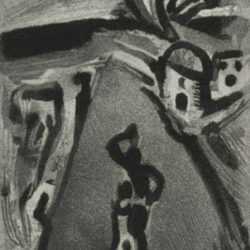
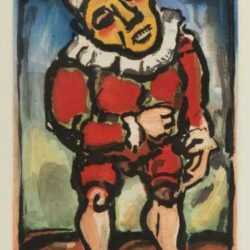
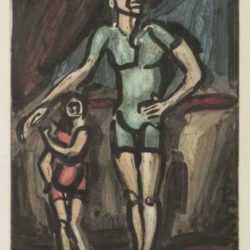
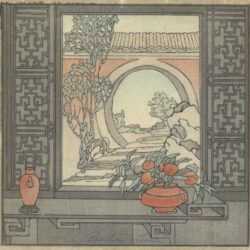
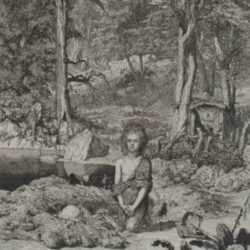
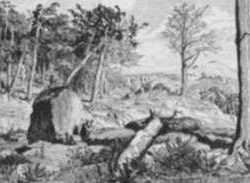
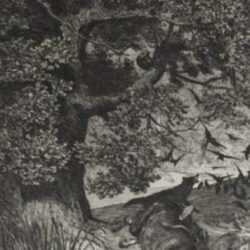
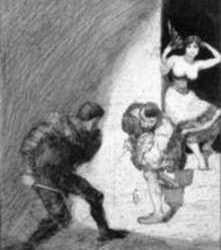
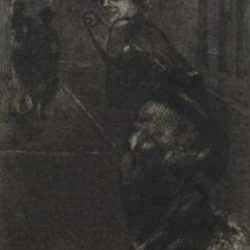
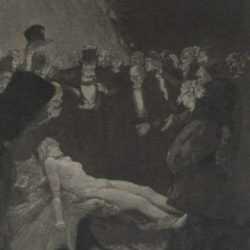
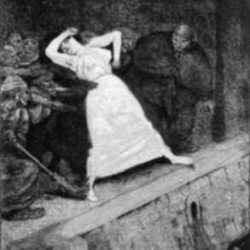
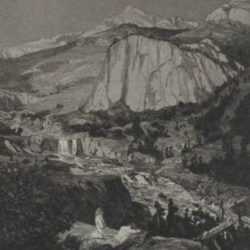
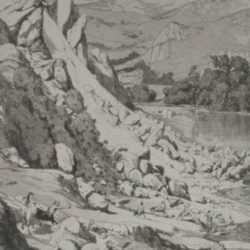
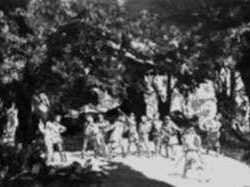
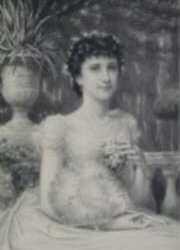
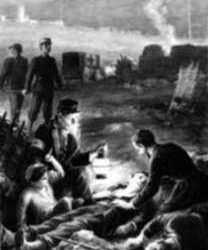
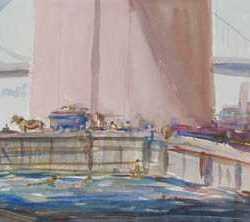
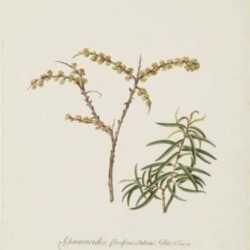
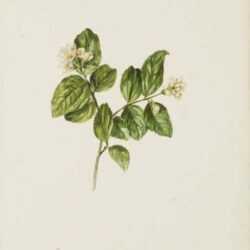
![Print by Arthur Briscoe: Gravesend Reach [Kent, England], represented by Childs Gallery](https://childsgallery.com/wp-content/uploads/arthur_briscoe_gravesend_reach__kent__england_p2168-07_childs_gallery-1-250x250.jpg)
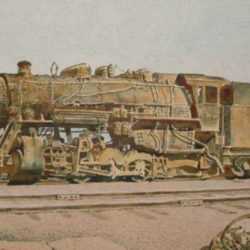
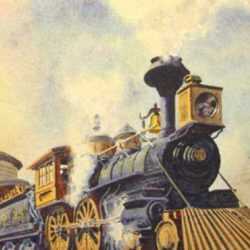
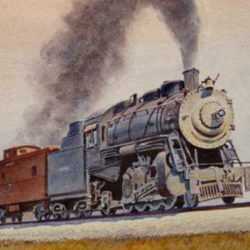
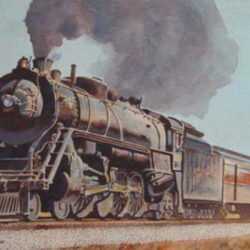
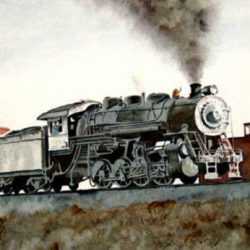
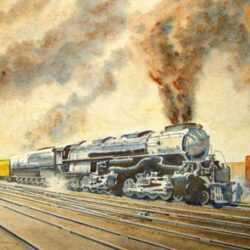
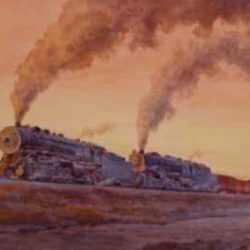
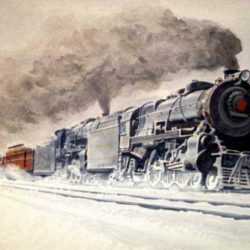
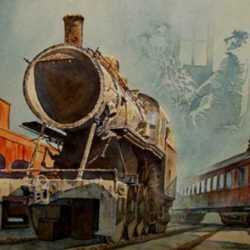
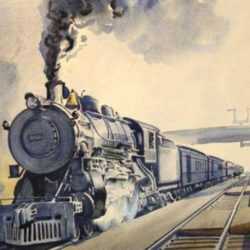
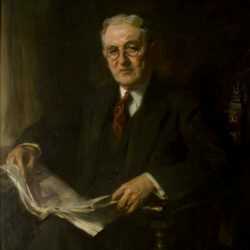
![Print by Joseph Pennell: Zaandam, No.3 (A Flock of Mills) [Holland], represented by Childs Gallery](https://childsgallery.com/wp-content/uploads/joseph_pennell_zaandam__no.3__a_flock_of_mill_p2321-23ra_childs_gallery-768x554.jpg)